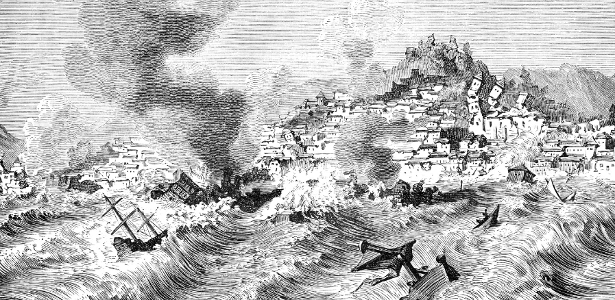

A small island in Hefei, the capital of eastern China's Anhui Province, is surrounded by a huge reservoir and dense vegetation. However, the place is dedicated to something very important: nuclear fusion research with the future of humanity in mind.
The Science Island is an example of China's innovation and openness in science and technology in pursuit of clean energy for the future, as well as solutions to climate change and health problems, through global cooperation.
“The one thing I really like here is, as you can see in the control room, the number of young people involved in the project. And that’s exactly what fusion needs,” said Richard Betts, ITER operations and experiments leader.
Built in France by seven ITER members — China, the European Union, India, Japan, the Republic of Korea, Russia and the United States — ITER will be the world’s largest experimental tokamak nuclear reactor. A tokamak is essentially a magnetic cage designed to confine, shape and control the superheated plasma that makes fusion reactions possible.
According to Bates, the International Atomic Energy Experimental Project should be viewed as a fundamental project for uniting nations, and China is a prime example of this.
China formally participated in the ITER program in 2006. China has implemented about 10% of the procurement packages. The Institute of Plasma Physics of the Chinese Academy of Sciences (ASIPP), located on the island, is the lead institute responsible for ITER.
“China is leading the way in nuclear fusion,” Grigory Trubnikov, director of the Joint Institute for Nuclear Research and academician of the Russian Academy of Sciences, said when he visited the island on July 1. “Our cooperation in fundamental research has given very good results in applied research.”
“We have many plans together, not only in basic research, but also in engineering, physics, new energy, biomedicine and many more to improve people's quality of life,” he noted.
Science Island is home to the Experimental Advanced Superconducting Tokamak (EAST), known as China's “artificial sun,” whose ultimate goal is to create nuclear fusion like the sun, using materials abundant in the sea to provide a continuous flow of clean energy.
In 2023, a new construction and operation plan for the ITER program was drawn up, which requires experiments to find and solve potential problems. With the same technological path and experimental conditions as ITER, EAST was selected by the ITER organization as a partner in improving its new plans.
China has shared the achievements of the East with the rest of the world.
In May 2023, the Chinese Academy of Sciences officially launched the Magnetic Fusion Energy Research Pilot Program for Open Innovation, aiming to build a globally competitive and open innovation ecosystem.
With the support of leading scientific facilities, including EAST, ASIPP has actively facilitated the development of relevant experimental disciplines and instrumentation in countries across Southeast Asia, West Asia, South America and North Africa.
On July 25, 2023, Thailand's first experimental tokamak device was officially launched, as a result of the joint collaboration between ASIPP and the Thai Institute of Nuclear Technology.
In order to enhance Thailand's capabilities in fusion research, the two sides decided to work together to build the first tokamak device in an ASEAN country and at the same time help Thailand develop a team of young talents in fusion research.
“More than 100 people from our team travel to ITER almost every year to conduct joint research,” said Gong Xianzhu, head of the Physics and Experimental Operations Department at the East Middle East.
Meanwhile, more than 500 foreign scholars visit the island every year to exchange and cooperate with their Chinese colleagues. The island has introduced more than 130 foreign professionals and established an innovation network covering more than 150 research institutions from about 70 countries and regions, according to ASIPP.
About 16 kilometers away from Science Island is Origin Wukong, the third generation of superconducting quantum computer independently developed by China.
The high-tech computer, named after a legendary Chinese legend, has shown its powerful power. Since its launch on Jan. 6, the equipment has completed about 250,000 quantum computing tasks for global users, and the number of instances accessing the computer from more than 125 countries and regions has exceeded 12 million, according to local authorities.
China will increase its capacity for opening up while expanding international cooperation, while private companies capable of leading national initiatives will receive support to make breakthroughs in key technologies, according to the CPC Central Committee's vision of comprehensively deepening reform to advance China's modernization.
Guo Guoping, chief scientist of Origin Quantum Computing Technology Co., explained that computing power will be the foundation of the future economy, and quantum computing power is much stronger than that of a supercomputer and requires less energy consumption.
“We can use quantum computing technology to make breakthroughs in various sectors to improve productivity, create more value and help boost economic development,” Guo added.

“Proud explorer. Freelance social media expert. Problem solver. Gamer.”






